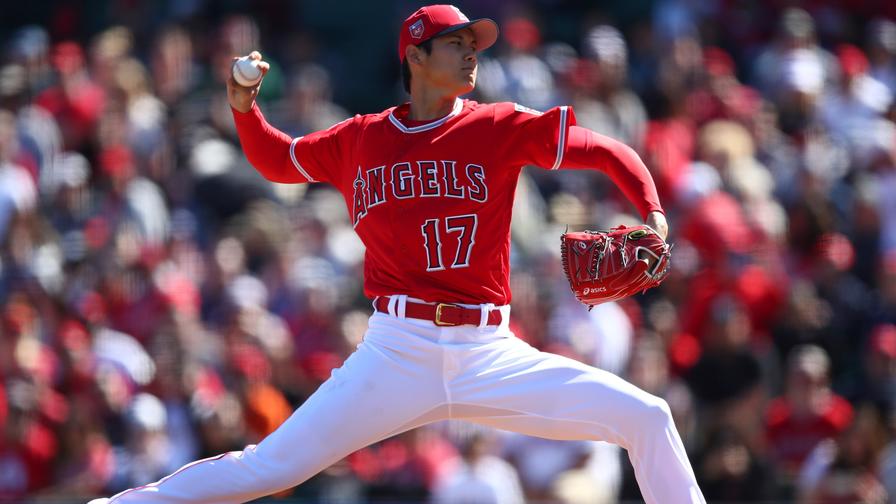3 Reasons Why You Should Avoid Shohei Ohtani in Fantasy Baseball

The entire baseball world is excited to see Los Angeles Angels dual-threat phenom Shohei Ohtani this season, and there's good reason for that. For the first time since Babe Ruth, Major League Baseball has a player who can be both an elite starting pitcher and one of the better sluggers in the game. Two years ago (his last healthy season), he hit 22 bombs in 104 games, had a slash line of .322/.416/.588, and went 10-4 with a 1.86 ERA 11.2 strikeouts per nine innings in 20 starts.
It's been about a century since we've seen something like Ohtani, and we've certainly never seen anyone like him in fantasy baseball. Howver, dealing with a dual-threat player is complicated, and there are enough reasons to consider avoiding him in season-long drafts this year.
Ohtani's Average Draft Position (ADP) of 73.22, per the National Fantasy Baseball Championship, makes him an early sixth-round pick in standard 12-team drafts, meaning he'd be the sixth player selected for most teams that do take the plunge. Below are three reasons why that is way too soon to be adding him to your roster.
Usage Restrictions
The three main fantasy baseball websites are all choosing to feature Ohtani in different ways, and these distinctions are important.
In ESPN leagues, owners will be able to draft him once, and he will have dual eligibility as a starting pitcher and outfielder/designated hitter. On days in which Ohtani is scheduled to pitch, though, his hitting stats will not count. So, if he goes 3-for-4 and hits two home runs in one of his starts, those stats will not count. On days in which he's a DH, any pitching stats accrued during those games (it's unlikely, but still a possibility) will not count, either. CBS Sports leagues are handling him pretty much the same way.
This isn't such a problem if you are allowed to swap out starters every day, but for leagues in which your starting rotation needs to be locked in at the beginning of the week, you won't be able to use him as a hitter. This is fine if he's a really good pitcher, but part of the allure is that he can do both.
For Yahoo! leagues, they have split Ohtani into two separate players, a hitter and a pitcher. You can use him in your lineup as both a hitter and a pitcher on the same day, but you will have to draft him twice to do so. That means using two draft picks on one player, and likely two early-round picks. That's a steep price and one not worth paying.
It should be noted that in all these formats, your fantasy commissioner can find workarounds to make it less complicated, such as crediting Ohtani with batting stats at the end of the week and adding them in manually, or making sure that whoever drafts Ohtani as a pitcher in Yahoo! leagues also gets him as a hitter.
The Angels' Six-Man Rotation
Here is where there are stronger arguments against selecting him. The Angels say they plan to use Ohtani as part of a six-man rotation in 2018, at least to start the season. While this may prove beneficial to Ohtani, who threw just 25.1 innings last year due to an injury suffered while playing the outfield, it means he'll make fewer starts than most regular starters.
More often than not, if the Angels stick with a six-man rotation, especially with a number of off-days in the first month of the season, most weeks will feature only one Ohtani start. That's how he was used in Japan, where all teams pitch with six-man rotations.
It's possible the Angels will abandon the six-man rotation at some point, and when they do, Ohtani's value as a starter will increase. But as of now, fantasy owners should consider themselves lucky if they get more than 25 starts out of him this season. In fact, numberFire's projects only expect him to rack up 135 innings of work this season with a 3.60 ERA and 1.17 WHIP.
How Many At-Bats?
One of the possible benefits of more time between starts is more games played at DH on those days off. However, the Angels say Ohtani will not be in the lineup on the days before or after he pitches, which means at least 2-3 days a week where he will be on the bench.
Again, this isn't a big problem if you're drafting him later than the sixth round, but at his current ADP, will he get enough at-bats to warrant that selection? There will also certainly be a period where he must learn to adjust to big league pitching, and failing to get at-bats close to every day while also learning to be a big league pitcher could eat into his effectiveness.
ZiPS projections think Ohtani will accumulate 355 plate appearances and hit .252/.313/.438 with 14 doubles, an OPS of .751, and a weighted on base average (wOBA) of .318.
Conclusion
Ohtani is a much more intriguing play in DFS, where players don't have to worry about restrictions on the number of starts or how many plate appearances he will accumulate throughout the season. When he's in the lineup, players should be excited to use him based on matchups. And when he's scheduled to start, he'll be a fascinating arm to purchase, depending on the price.
In season-long leagues, though, owners typically want surer things at the end of the fifth round or early in the sixth round. If you're someone who likes to take a risk, then Ohtani may be the player for you. But if you're an owner who likes a little more certainty with their early-round selections, then you should stay away from the Japanese phenom, who will probably be a better asset in real life than he will be for fantasy baseball.
















